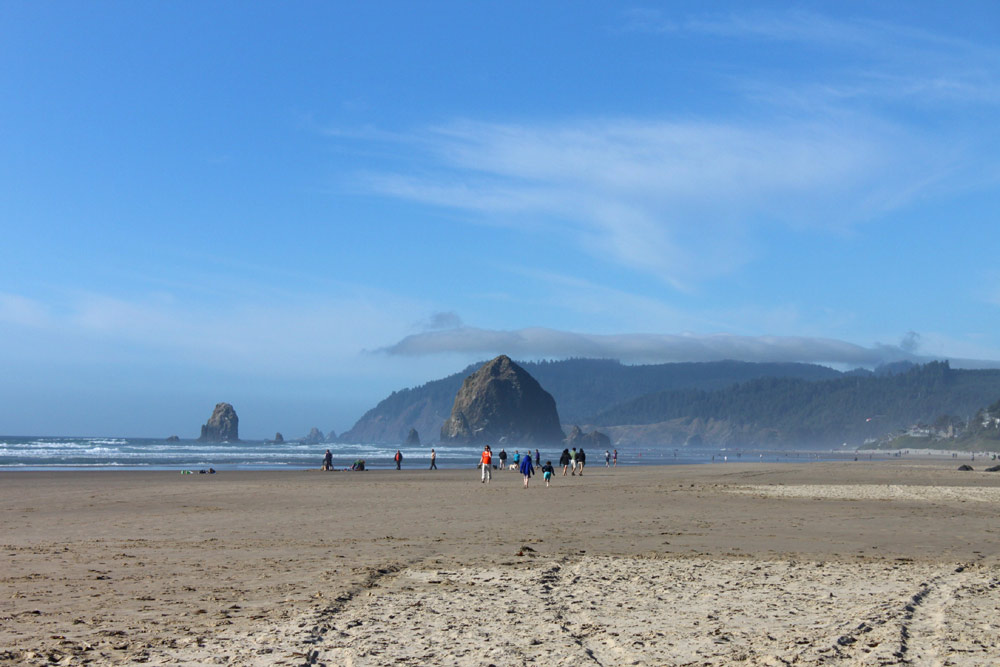Oregon
Is Cannon Beach’s Haystack Rock Biggest Anything? No: Oregon Coast Geology
Published 07/04/23 at 4:31 a.m.
By Oregon Coast Beach Connection staff
(Cannon Beach, Oregon) – A sea stack or a monolith is a lovely rock by any other name. Or something like that. (Photos Oregon Coast Beach Connection)
Whatever’s going on with Cannon Beach’s Haystack Rock, it’s a lovely chunk of basalt. There’s no denial of that. Yet it’s not the tallest or the biggest, or whatever other record-breaker gets attached to it. Yet it happened again. In the national media, one publication just lobbed heaps of praise on the north Oregon coast town, but in the midst of it all made the nebulous claim that Haystack Rock is the third “tallest sea stack” in the world.
Oops, they did it again. It’s not.
A similar claim was made for decades by local tourism officials that Haystack Rock was the third largest monolith in the world. Looking into that, you quickly discover there is no official list of monoliths by height. When Oregon Coast Beach Connection started asking questions about that over a decade ago, those claims disappeared.
Now, some other travel publication has changed that to “third largest sea stack” in the world. Not even close. In fact, several sea-bound landmarks just off the Oregon coast are higher than Haystack’s 235 feet, including Haystack Rock in Pacific City. That one has been measured at 340.6 feet by state geologists, making it about 100 feet higher than the more well-known Haystack.

To boot, there’s a third Haystack Rock on the Oregon coast: one at Bandon.
If you look at Rockaway Beach’s Twin Rocks or the arch rock at Mack Reef on the south coast, they appear to be at least the size of the Cannon Beach fave.
No, in fact the honor for tallest sea stack in the world goes to Ball’s Pyramid near Lord Howe Island (Australia) at 1,884 feet high. Britain has several sea stacks way taller than those here, including the 449-foot Old Man of Hoy. In the Galapagos Islands there’s 500-foot Kicker Rock, (or the Sleeping Lion).
All that’s confirmed from a variety of authorities in the travel world or geology world.
At one point, Cannon Beach modified their claim to “intertidal monolith,” but that’s not a thing. In fact, when talking to north coast geologist Tom Horning, you discover that “monoliths” is such a broad term it’s incredibly nebulous.
On the flip side, there is no official listing for tallest monoliths at the tideline that you can walk to, so if you claim it there’s no way to prove or disprove that.
Horning told Oregon Coast Beach Connection years ago this gets into quite the rabbit hole.
“If I got picky, I can think of several very large rocky knobs in Alaska that have been sculpted by ice (monadnocks) but that are surrounded by water (stacks or islands), but which are 20 times the size of either of our Haystack Rocks,” Horning said. “And they have many smaller but immense cousins. Our features do not rate as among the world’s largest. Perhaps among Oregon’s largest, but not the world’s largest. It is just a bit of tourist promotion that has gotten a life of its own.”
However, Cannon Beach’s Haystack Rock is one of the few breeding homes along the West Coast to the endangered tufted puffins, and that makes it special on its own.
It has a weird origin story, geologically. See how Haystack Rock Was Created.
Hotels in Cannon Beach – Where to eat – Cannon Beach Maps and Virtual Tours
More About Oregon Coast hotels, lodging…..
More About Oregon Coast Restaurants, Dining…..
LATEST Related Oregon Coast Articles
Back to Oregon Coast
Contact Advertise on Oregon Coast Beach Connection
All Content, unless otherwise attributed, copyright Oregon Coast Beach Connection. Unauthorized use or publication is not permitted